Today we travel to a future where we try to break up with cement. Can it be done? How did cement because so ubiquitous? And what’s so bad about cement in the first place?
Guests:
- Grady Hillhouse: civil engineer and host of Practical Engineering
- Robbie Andrew: senior researcher at CICERO Center for International Climate Research
- Amy Slaton: historian at Drexel University and author of Reinforced Concrete and the Modernization of American Building
- David Stone: inventor of Ferrock
Further Reading:
- Practical Engineering: What Is Concrete? (Grady’s YouTube series)
- A Comparison of Six Environmental Impacts of Portland Cement Concrete and Asphalt Cement Concrete Pavements
- Global CO2 emissions from cement production (Robbie’s paper, discussed in the episode)
- Mitigation of climate change by reducing carbon dioxide emissions in cement industry
- Quantifying CO2 emissions from China’s cement industry
- Carbon dioxide emissions and climate change: policy implications for the cement industry
- Evolution and projection of CO2 emissions for China’s cement industry from 1980 to 2020
- Evaluating the carbon leakage effect on cement sector under different climate policies
- Reinforced Concrete and the Modernization of American Building (Amy’s book)
- The Materiality of Cement in the Cultural Matrix of the Middle Cross River Region
- The Materiality of Roads and Public Spaces in Provincial Peru
- Cement citizens: housing, demolition and political belonging in Luanda, Angola
- Concrete and corruption
- ASSEMBLING AND SPILLING-OVER: Towards an ‘Ethnography of Cement’ in a Palestinian Refugee Camp
- Some Thoughts About the Architectural Use of Concrete
- New cements for the 21st century: The pursuit of an alternative to Portland cement
- Sustainability in the EU cement industry: The Italian and German experiences
- Making Concrete Change Innovation in Low-carbon Cement and Concrete
- UA Research Spawns Eco-Friendly Cement Substitute
- This cement alternative absorbs CO2 like a sponge
- Creating Carbon-negative Building Products from Local Recycled Materials
- Tohono O’odham Nation
Actors:
- The Snowglobe Narrator: Brent Rose
- Lenny Haywood: Evan Johnson
- Farah Mousterian: Zahra Noorbakhsh, host of Good Muslim, Bad Muslim
- John Jacob Siwa: Joseph Jones
- Juana Aguilar: Tamara Krinsky, host of Tomorrow’s World Today
- Kevin Macklin: Lawrence Carter Long
Flash Forward is produced by me, Rose Eveleth. The intro music is by Asura and the outtro music is by Hussalonia. The episode art is by Matt Lubchansky. Special thanks this episode to the Women Audio Mission studios, Maryam Qudus, Stephanie Lopez, The Potluck Podcast studio, the Potluck Podcast Collective and Quincy Surasmith.
If you want to suggest a future we should take on, send us a note on Twitter, Facebook or by email at info@flashforwardpod.com. We love hearing your ideas! And if you think you’ve spotted one of the little references I’ve hidden in the episode, email us there too. If you’re right, I’ll send you something cool.
And if you want to support the show, there are a few ways you can do that too! Head to www.flashforwardpod.com/support for more about how to give. But if that’s not in the cards for you, you can head to iTunes and leave us a nice review or just tell your friends about us. Those things really do help.
That’s all for this future, come back next time and we’ll travel to a new one.
FULL TRANSCRIPT BELOW
▹▹ ▹▹ ▹▹ ▹▹ ▹▹ ▹▹ ▹▹ ▹▹ ▹▹ ▹▹ ▹▹ ▹▹ ▹▹ ▹▹ ▹▹ ▹▹ ▹▹ ▹▹ ▹▹ ▹▹ ▹▹ ▹▹ ▹▹
Rose: Hello and welcome to Flash Forward! I’m your resident artificial intelligence Rose and I’m your host. Flash Forward is a show about the future. Every episode we take on a specific possible… or not so possible future scenario. We always start with a little field trip to the future, to check out what’s going on, and then we teleport back to today to talk to experts about how that world we just heard might really go down. Got it? Great!
This episode we’re starting in the year 2045.
***
[[music up]]
Narrator: Everybody thinks they’re on the verge of the next million dollar idea. But do they have what it takes to really make it big? It’s time to find out. Real entrepreneurs. Real investors. Real success. But don’t expect anything warm and fuzzy. Welcome to THE SNOWGLOBE. Let’s meet the bears.
Lenny Haywood, a renegade entrepreneur and billionaire who not only owns the Seattle Supersonics, but also plays for them.
Lenny Haywood: What am I looking for? I’m looking for someone who’s working like there is someone else working 24 hours a day to take it all away from them.
Narrator: John Jacob Siwa, a fashion icon turned fashion mogul who doesn’t just walk the runway, he owns it, literally.
John Jacob Siwa: You know why jerks get rich? They get rich because they ask for what they want, and they don’t care what anybody thinks of it.
Narrator: Farah Mousterian: the daughter of Iranian immigrants who went on to become a technology mogul like the world has never seen, selling her first startup for 4 billion at the age of 15 and never slowing down.
Farah Mousterian: Money has no grey areas. You either make it or you lose it. I make it, and I can help you make it too.
Narrator: And Juana Aguilar, a venture capitalist who has taken hundreds of businesses under her wing to form the world’s largest and most profitable corporation conglomerate worth nearly a trillion dollars.”
Juana Aguilar: People want to do business with someone they like. If people like you, they’re going to want to do business with you. If I don’t like you, I’m out.
Narrator: The bears will hear from the world’s best, brightest and savviest inventors. For some, it will be heartbreaking
Roberta: It’s not paranoia, it’s science!
Lenny: Are you kidding me?
John: She’s trying to rip you off!
Amy: Can you give me a second to think, please?
Farah: Oh my god we’re all going to die.
Narrator: For others, it will turn into the opportunity of a lifetime.
John: These are nice!
Kevin: This is the future of building ladies and gentlemen!
Christina: Who wants to dive in, the water’s empty!
Farah: We’re going to make some money before society collapses girls!
Let’s step into the globe. [[whoosh]]
[[[music fafdes out]]
Kevin Macklin: Hi, I’m Kevin Macklin, and I’m the inventor of ORYC.
Between 1935 and 2045, the only thing humans consumed more of than water, was concrete. We built the Pantheon in Rome out of concrete. Concrete allowed China to jump start its infrastructure and economy, and become the dominant world power it is today. Your homes likely sit on a foundation of concrete, you walk and drive on concrete every day, your kids play on it, airplanes take off on it, it’s everywhere.
But, as I’m sure you all know, the era of concrete is over. Starting next year, cement, a key ingredient in concrete, is no longer allowed in any new construction. For developers, it’s a brave new world. Architects can totally rethink our materials and our construction. And we, you and me, can have a hand in this completely new kind of building, and make a ton of money on it.
Let me show you why.
Here I have four cylinders of concrete, made with the traditional Portland cement. You can feel how heavy they are, here you go, pass them around.
And here, I have four cylinders of ORYC. Feel how much lighter this is?
So you might worry that this lighter, smoother ORYC isn’t as strong or durable as the regular stuff. And if you want to build bridges and roads and homes and skyscrapers, you need a material you can rely on, right? Well… let me show you something.
This, is a testing rig I designed for ORYC. In the chamber on the right, I’ll put the traditional concrete. In the chamber on the left here, I’ll put ORYC.
Let’s start with strength, shall we? This hydraulic press will subject each cylinder to an ever increasing amount of pressure…. [hissing sound]
[breaking sound]
Ah there goes our regular cement, that’s 2,000 PSI. But ORYC is still going strong…. [hissing]
[breaking sound]
And there we go, that’s an incredible 5,000 PSI! Over twice what the cement can take.
Now let’s see how they hold up to heat.
[fire noise, very loud]
Lenny: Whoa
Kevin [sort of shouting over the sound]: I’m hitting these with 2,500 degrees; that’s hotter than most forest fires.
[click]
Kevin: And, as you can see, the cement doesn’t look so good does it? ORYC, on the other hand, is still holding up…. Now… [tweaking knob] it’s time for the salt water test. [rushing water sound]
[tweaking knob again]
I’ll let that sit for a minute, since salt water takes time to corrode, but let me assure you that the cement won’t fare very well. ORYC, on the other hand, will do just fine.
This is the future of building, ladies and gentlemen. And pretty soon, all new construction projects are going to need to find new materials. All they need to do, is switch to ORYC. I’m looking for $10 million for 5% of the company.
John: Whoa! You think this is a 200 million dollar business?
Kevin: I do. Currently, CRH, the biggest cement supplier in the United States, is making 2 billion dollars every year. Even if ORYC replaces just a fraction of that output it’s still a huge market.
John: How much have you sold so far.
Kevin: Well… about $30,000 worth. But there’s a reason for that
John: [laughing, interrupting] What? $30,000? And you want us to think this is a 2 billion dollar business?
Lenny: [laughing] Are you kidding me?
Kevin: I can prove that ORYC is safe and effective. But civil engineers hate change. They don’t want to use anything that doesn’t have an ASTM code and an ICC code. But it’s a total racket! They charge absurd sums to get these certification codes.
Lenny: How much?
Kevin: Well, you have to hire a third party certified lab and go through their protocols…
Lenny: You’re not answering my question how much does it cost to get a material certified?
Kevin: Half a million dollars, at the least. Sometimes up to $2 million.
Farrah: So you’ve developed this new material in your garage, built your own testing rig, and want us to believe that it’s going to be the material of the future.
Kevin: It will be the material of the future.
Juana: What are the emissions like?
Kevin: What?
Juana: The point of banning cement is to cut down on CO2 emissions, right? Cement production is responsible for what… 10% of manmade emissions?
Lenny: I think that’s right.
Juana: So the point of banning cement is to help the environment. How much CO2 does the production of ORYC take?
Kevin: That’s a complicated question. I’m not sure. It hasn’t been scaled up yet for testing.
Juana: So in theory, you could get all this money from us, scale up, and then ORYC could be banned anyway if it’s just as bad if not worse for the environment?
Kevin: No no, that’s unlikely.
Juana: But you just said you don’t know that, you don’t know if it’s unlikely. You haven’t done enough testing on this, I’m sorry, I’m out.
Farrah: I see no future in physical spaces, I’m also out.
Lenny: Why haven’t you spent the money to have this approved by whatever that organization is?
Kevin: To be perfectly honest, because don’t have the money. I spent my life savings developing and inventing this. I know it can be the future, but I just can’t get it there alone. That’s why I need you guys.
Lenny: Okay so how about this, I loan you the $500,000 you need to get this approved, with 7% interest. If you can get it approved, which you believe you can right?
Kevin: Yes, definitely.
Lenny: Okay, so when you do get it approved I want 10%.
John: [laughing] That’s a terrible deal!
Lenny: Come on! He doesn’t have any sales! I’m offering a charity deal here!
Kevin [nervous]: 10% is too much.
Lenny: Listen, I’m going to be brutally honest with you here: you have nothing. You don’t have a product that anybody will use. Even if you can get it approved, it might get banned for being too pollutive. You walked in here claiming to have a two billion dollar company when you literally can’t sell any product. We should have laughed you out of this room. You told us yourself you have no money. I like you. I like people who invent in their garages. I’m offering you a lifeline to make this happen. But if I’m going to take a risk on some guy with his weirdo garage box of fire, I need it to pay off. Do you want this to happen or not?
Kevin: I do, of course I do.
Lenny: So what will it be?
Kevin: 7%?
Lenny: Deal.
[clapping]
Lenny: Alright, let’s get that testing going!
[music up]
Rose: Okay today’s episode is all about cement! And specifically, what might happen if we tried to stop using it. But before we can go any further, we have to clear up a very important set of definitions. Because I guarantee some of you have been annoying engineers your whole life by using the words cement, and concrete interchangeably. They are, in fact, not the same thing!
Grady Hillhouse: In its most basic form concrete is really just aggregates that are bound together by something.
Rose: This is Grady Hillhouse
Grady: I am a professional civil engineer; work mainly on dams in my professional career. But also, as a hobby, I make videos about engineering and post them on YouTube under the name Practical Engineering.
Rose: Grady has a whole series of videos about concrete and he’s here to help us understand the difference between cement and concrete.
Grady: When most people think about concrete, they think about the gray stuff that makes up our driveways and sidewalks. And, in that case, the binder is Portland cement.
Rose: In other words, cement is an ingredient in concrete.
Grady: Cement is… it’s made it’s really a quarried material, usually limestone, that gets put into a kiln and the kiln. And the kiln causes a chemical reaction that converts the limestone, and some additional materials, into a product that we call clinker. And then when the clinker is ground up into a very fine powder, that’s what creates cement.
Rose: So to make cement, you dig limestone out of the ground, fire it in a kiln to make something called clinker, and then grind that clinker up into a powder. That powder is the cement. To make concrete, you usually add some filler, like rocks or gravel, and water. And that is when the magic happens.
Grady: In its essence it’s just a binder that that reacts with water to become hard and sticky.
Rose: There are all different kinds of cement out there, with all different amounts of clinker in them. And on top of different kinds of cement, you can also tinker with the other elements of concrete– how much water, how much aggregate, how it’s mixed.
Grady: So it’s really kind of endless; just about anything you can think of that you might ask. concrete to do, someone’s thought about what it takes to come up with a mixture that can meet that requirement.
Rose: Right now, listening to this, chances are you’re really close to some concrete. Most houses sit on concrete foundations, if you’re driving in a car, chances are concrete was used in the construction of the road you’re on. If you’re in a big building, there’s almost certainly reinforced concrete in the walls somewhere. If you’re walking on the sidewalk, it’s probably made of concrete! If you’re listening to this podcast while out in the middle of the woods on a relaxing hike, then perhaps you are the exception, and also I would like to trade places with you right now.
This is all to say that architects and engineers, the love concrete. And they love concrete for a couple of reasons. One: it’s really cheap.
Grady: These concrete is essentially made from quarried materials. So these are materials that come directly out of the ground. The only one of which that requires any major processing at all is the cement. And cement is proportionally a small component of the of the concrete. And so the majority of is made up of basically materials that come straight out of the ground. And because of that, it’s very cheap. It’s very cost effective.
Rose: Two: it can take almost any form.
Grady: If you can build a form, you can make something out of concrete take shape.
Rose: Three: It’s really durable.
Grady: Concrete is really, really hard. And it, under the right conditions, can last a really long time compared to other construction materials
Rose: And four: It’s a known quantity. Engineers know how to work with it, and people know what to expect from it as a materiel.
Grady: It’s so ubiquitou,s especially in urban areas, that we hardly even consider it. It’s just like trees, or grass or any other part of nature, at least in the city. And that’s where the term concrete jungle came from, right? It’s just in everything.
Rose: We’re going to come back to this point later in the show, when we meet a guy who’s trying to challenge concrete’s stronghold. It turns out it’s hard to convince anybody to build with something other than concrete, in part because concrete is basically the default material.
But not everybody loves concrete the way that engineers do. Environmental groups have taken aim at this material recently because cement, that key ingredient in conrete, is a huge source of CO2 emissions.
Robbie Andrew: So, the first thing is that you have to heat this clinker to very high temperatures. So, to produce the clunker you really have to hold a very high temperatures. That’s 1500 degrees Celsius which is about 2600 Fahrenheit.
Rose: This is Robbie Andrew, a researcher at the CICERO Center of International Climate Research.
Robbie: So you need a huge amount of energy to produce that level of heat. And most of that is coming from fossil fuels; burning fossil fuels right there on the spot; ;combusting these fuels to generate that heat.
Rose: Robbie recently published a paper trying to pin down exactly how much CO2 the cement industry produces. And it turns out that this a hard question to answer, because along with the energy required to heat the kilns up super hot, there’s actually another source of emissions in cement production. So remember that cement comes from limestone, which is mostly made of calcium carbonate.
Robbie: So calcium carbonate is calcium with a carbonate. Carbonate is CO3, that part of the compound of the molecule; the CO2 of that, gets released and you’re left with calcium oxide.
Rose: In other words, when CO3 gets heated, it breaks apart, and releases CO2, which, of course you know, is a greenhouse gas.
Robbie: So there’s a chemical process which releases CO2, when you break down the calcium carbonate to get the stuff that you want.
Rose: Depending on which reports you read, cement production accounts for anywhere from three to ten percent of all man made CO2 emissions. Which is both a lot, and also a pretty big range, right? Three to ten percent. And one reason you see this range, is because some people count both of those sources of CO2 emissions – the heating of the kilns and this chemical reaction, and some only count one. But even if you’re just counting one, and Robbie looked at that second thing, the chemical reaction, it can still be hard to get a true estimate.
Robbie: So so the first thing is you have to collect a whole lot of data. So if you think about just a single cement production facility, then that’s a lot of data you have to collect. There’s a lot of measurements you have to do to estimate what the CO2 emissions are there. But you have to do this for all cement facilities around the world.
Rose: Plus, there’s actually no single international agency that’s responsible for gathering up this data and verifying it. Countries that do report, tend to report on cement production, not clinker production.
But remember, not all cement is made out of the same amount of clinker.
Robbie: It’s not the production of the cement that we need to estimate these chemical process emissions. It’s the production of the clinker that we need, because you can produce all sorts of different segments with different amounts of clinker in them.
Rose: Portland cement, which is what you see mostly in the US, is made up of 90 to 95 percent clinker. But China, which now produces 60% of the world’s cement, doesn’t really use Portland cement at all, they use a totally different formula that actually requires a lot less clinker.
Robbie: So if you assume that if you had production data for China that assumed it was all Portland cement, then you would way overestimate the amount of clicker it produced, and therefore you’d way overestimate the emissions from the production of that clinker.
Rose: And in an ideal world, you don’t just get clinker production data, you really want to tie that data with a county’s measured emissions, which is another tricky task.
Robbie: China doesn’t report, officially, what its CO2 emissions are, except for every five or six years to UN body. And India is behind that.
Rose: What all of this means is that if you’re trying to figure out how much CO2 the global cement production industry is responsible for… it’s actually pretty hard to pin down a good number. That said, despite the uncertainties, it’s clear that producing all the cement for all that concrete, is a pretty big contributor to global CO2. There are some things we can do to tamp those emissions down — things like using renewable energy for the kilns that heat up the limestone. But even that’s not actually as easy as it seems.
Robbie: For the temperatures involved, it’s very difficult to use electricity to sustain those sorts of really high temperatures. And so there’s really nothing like having coal burning at a very high temperature.
Rose: And on the other side, that chemical reaction that also emits CO2, researchers are trying to come up with ways to capture that gas before it gets into the atmosphere. If you change the way the clinker is heated up, you can actually separate out the CO2 before it combines with all the other gasses produced in the process.
Robbie: You can then remove the CO2 very simply, if it’s almost pure stream CO2. You can basically see that straight into a coke bottle.
Rose: Or… you could try and come up with something completely different.
David Stone [recording himself]: I’m here at the International Builders Show, at the Las Vegas Convention Center. And it’s the beginning of the show, and it’s already crowded and chaotic. And I thought it was a good sign that, as I went through the Tucson airport early this morning, the security checker noticed my Ferrock samples, and wanted to know what they were. As it turns out, he’s making a kind of alternative concrete mix that’s very light weight, and wanted to connect with me later about this, back in Tucson. Even though I’m a scientist, I take that as kind of a good sign that things are going my way.
Rose: That is David Stone. He’s invented something called Ferrock, which you heard him talk about. And in a little bit, we’re going to hear all about his quest to try and get people to use that new, green material that he’s developed. But first, we need to understand a little bit better how concrete took over in places like the United States. And we’ll do that, after this quick word from one of our sponsors.
[[AD BREAK]]
Rose: Obviously concrete has been around for a long time. The Romans are famous for using concrete to build the Pantheon, and some people think that the Romans had some kind of secret for making a better version of concrete. A secret that, to this day, we still haven’t cracked. We don’t have time to get into that right now, but $5 and up Patrons are going to hear all about it in the bonus episode this week. So, if you want to hear about Roman concrete, and whether or not it really is this incredible, secret thing, you can go to patreon.com/flashforwardpod and become a patron.
Anyway, we’re going to skip over a lot of history here, and start the story of concrete when it really starts to take off in a big, commercial, industrial way in the United States. And that starts to happen in the 1890’s with the construction of factories.
Amy Slaton: They were extremely pared down. They were extremely simple structures, where you could see what they were made of. There was no brick cladding. There was no terra cotta. There was no decoration. It was just a concrete skeleton with some mass produced windows, maybe some brick.
Rose: This is Amy Slaton, a historian at Drexel University and the author of a book called Reinforced Concrete and the Modernization of American Building.
Amy: I was struck by, once you started looking for this, that these buildings, whether they were built in 1890 or 1960, looked very similar, over time. Looked very much like each other. And concrete was the unifying material being used.
Rose: And you might think, “okay, sure, making factories out of concrete makes sense because its cheap and who cares what a factory looks like?” But Amy says that that’s not what’s going on here.
Amy: There were even settings, companies, or industrial parks, or factory complexes where you’d have buildings like that that were places for manufacturing, or warehousing, or scrap handling right next to an elaborately decorated office building – concrete underneath – but covered with complex brick decoration or terra cotta. And so, I started to realize that where you could see concrete, it wasn’t because people were too cheap to decorate, it wasn’t because they had failed to figure out how to make it look nicer. It had an intentional cultural meaning.
Rose: Because concrete is so ubiquitous, it can sometimes feel like a generic default material. Not so much a choice, as much as the lack of choice. But that’s not true.
Amy: It was a deliberate aesthetic choice to leave the concrete showing. And I suddenly realized that concrete was not so much a default architectural choice, but a deliberate aesthetic expression reflecting cultural values
Rose: So, it’s the turn of the century, America is truly moving into a new era of production. The nation is embracing this idea of economy of scale. There are huge coal mines going up, big agribusinesses taking over, assembly lines are going in everywhere.
Amy: So by 1900 or 1910, the old building methods, which relied on artisans like carpenters or masons, fade out and concrete comes in with that same economy of scale opportunity for business owners and builders
Rose: And with those changes come changes in labor practices, right? It used to be that to build a building you had to employ a bunch of individual experts – bricklayers and carpenters and masons – and each of those jobs was a skill. But with assembly line production, and the advent of cement, you could shift the balance of labor. Instead of employing a team of skilled experts, building sites could be more like assembly lines, where there are one or two skilled managers overseeing an army of so called unskilled workers.
Amy: The nation was sort of gaining a real comfort level with a very particular kind of economic system… it’s capitalism, but it’s a very stratified wage system. You know, it’s perfectly acceptable in the United States for a great many people to have lower skilled, lower paid, occupations that aren’t ever going to lead to a lot of affluence or security or higher skills, and a few people with much more education, higher skills, higher wages and economic mobility.
Rose: And this is also the time when the field of engineering, as something that you’d get a university degree in, as a kind of specialist field, really starts to take off in the United States.
Amy: We start to get a field called Material Science and Engineering in the late 19th century. We start to get people graduating with degrees in the behaviour of ceramics or cement.
Rose: Across the United States colleges were opening up engineering and science departments, and those departments didn’t just train this new fleet of students on things like materials testing, they also basically created the field of materials testing. These university labs basically invented, and definitely solidified the idea of “quality control” which today you hear thrown around all the time, but was not always a thing. And these university programs were training students to step into this new class of workers, these people who would oversee and be more powerful than those doing the actual building.
And this stratification of labor of course interacts with issues of immigration and race and discrimination.
Amy: There was a line in one of the engineering textbooks about the stuff, teaching undergraduate engineers about the stuff. And they’d be the ones who would eventually get these jobs. And one of the study questions at the end of the chapters – around 1914, 1918 maybe – literally described one of these specifications for preparing a cement specimen and said: question, is there anything in the above protocol that Tony the Italian Mason could not do? So think about this, it was literally naming the person who you shouldn’t let do this work as Tony the Italian mason, right? Just bald racism, typical for the time. But it was also distinguishing the engineering student reading that textbook as someone who was intellectually, occupationally, technically, superior to Tony the Italian mason.
Rose: At the same time, these university labs are filling up with scientists who are working on improving the formulation and use of concrete. With the help of these scientists and universities, a whole industry of standards and testing and barriers goes up. Professors and specialists helped create the rules that The American Society for Testing Materials and the American Society of Civil Engineers use to this day to certify and approve materials. Engineers also promoted the standards and testing as not only crucial, but specialized. Only a trained engineer could provide a true test of quality control here. And, they claimed, doing it this way would be faster, cheaper and more efficient, which is exactly what American businesses wanted to hear. These programs also leaned heavily on the idea that this was inevitable scientific progress — that pushing this material, instead of another, was a completely objective, neutral choice. And these aren’t separate events — the science and the changes in labor. They’re one and the same.
Amy: Science is not pulling wider cultural events behind it. Culture is not pulling science behind it. Both are happening; it’s all one culture.
Rose: And so, by the 1940’s-ish, concrete became this symbol of science, this symbol of efficiency, this symbol of progress. And that is why concrete took over, because, with the help of scientists and industry, it became seen as a material that represented everything American life should be.
Amy: The uptake of functionalist architecture, the acceptability of bald concrete surfaces, was a very deliberate expression of values by Americans. Those values just happened to be about efficiency, economies of scale, and capitalism.
Rose: Ever since reading Amy’s book, I’ve been obsessed with looking at concrete buildings. I always just kind of assumed that concrete was boring… that it was just this whatever baseline material. That it meant and symbolized basically nothing. But now, whenever I see a concrete building, I think about all the people who worked really hard to make me think that, to make concrete feel like a default material. And who worked just as hard to try and pretend like none of that work behind the scenes ever happened.
And all of these years of work that engineers put into making concrete king, are really hard to undo. In fact, there are people who work in materials engineering, who to this day believe that we will never come up with a better alternative to concrete. But, at the same time, there are inventors all over the world who are trying. And the biggest hurdle they face might not be the chemistry, or the inventing, but instead that incredibly complex, solid set of rules, and regulations, and tests that concrete engineers erected in the early 1900’s.
David [recording himself]: Here I am, at the International Builders Show, on the second morning. So, this morning, I’m going to focus on the big players. The companies that could make Ferrock happen, or not. I was advised strongly to get on their good side. Because they can both close doors, and open doors, for someone like me. So, this morning, I’m going to seek them out; the giant multinational corporations that I hope would look at Ferrock as potentially one of their own product lines. We’ll see how that goes.
Rose: This is David Stone again, and when we come back you’ll hear all about his idea for a new building material, and why he’s having so much trouble getting anybody to use it. But first, a quick word from another one of our sponsors.
[[AD]]
Rose: Okay, so cement is everywhere. It’s entrenched in not just our landscapes, but also our culture. Most people agree that we should be at least looking for greener alternative materials, if we can. And in fact, lots of people are trying to invent new materials. People like David Stone, who you’ve already heard a little bit from.
David: Well, it started as most inventions start, with an accident.
Rose: David was actually trying to figure out how to keep steel dust from sticking together and blocking up water pipes and trenches. So he was testing out various things to add to the steel dust to keep it from cementing up. And one day, he tried mixing in some silica.
David: It reacted immediately. It started steaming. It was hot with reaction, sputtering. And I knew immediately this was not going well, and I threw it all away.
Rose: The next morning, when David came back into the lab, the trash hadn’t been taken out.
David: And when I looked at the junk that I had thrown into the trash, I found out that it had gotten very hard, hard as cement. And did the classic knock it on the lap counter, and thought, “hmmm, this might actually be something beneficial for another purpose.”
So that was the trajectory that got started way back then in 2004. And I’ve been on it pretty much ever since.
Rose: For the last fifteen years, David has been developing this invention into a material he calls Ferrock. It’s made from a few key ingredients: Steel dust, which is a byproduct from all kinds of industries that generally doesn’t get recycled. Silica, which is basically just ground up glass. And CO2, which is what makes the material harden. And for the last fifteen years, David has been trying to refine his product and get it out onto the market. And that first part, refining his product, that’s actually gone pretty well.
David: We worked it all out, and got a material that hardens within a few days, like Portland cement takes a few days. And gets harder than Portland cement And much stronger in flexural strength, which is the ability to resist bending but also to bend without breaking, flexural strain. Ferrock is several times higher than Portland cement in flectural strength.
Rose: According to their tests, David says Ferrock is better than Portland cement in all kinds of ways.
David: It is also tougher, more resistant to cracking, and much more resistant to high heat Most people don’t realize Portland cement breaks back down into a powder – from whence it came in the cement kilns at the plants – it’s exposed to fire, fire type temperature for too long, it breaks down. It degenerate into dust. Ferrock does not. It goes through a kind of re-mineralization process, and actually gets harder.
Rose: David says that Ferrock also holds up to salt water better than Portland cement. And it’s cheaper too, according to the life cycle assessments tthat they’ve done. And, remember, it actually captures CO2, instead of emitting it. David thought he had a slam dunk.
David: You know, I was naive. I thought, well, with the discovery of Ferrock, proving that it is better – meaning stronger, tougher, more crack resistant than Portland cement – greener in the fact that it absorbs CO2 captures carbon dioxide, this greenhouse gas and traps it permanently. So better, greener, cheaper. And I thought well, that’s all we have to do. That’s it. We’re in, right? I thought, to use the cliche, the world would beat a path to our to our door. Didn’t happen.
Rose: It turns out, getting a new building material from idea and proof of concept, to market, is really, really hard. And really expensive. At this point David has spent over $500,000 just on testing alone to prove that the material is safe. And if you want to use a material in a certain application, you sometimes have to test it even more.
David: Not just the materials themselves, but how they might perform when they’re put into the form of a beam, or slab, or a wall. And that can go on and on for years, and cost into the millions.
Rose: David has done some small scale projects with Ferrock — he partnered with the Tohono O’odham Nation in Arizona, and built a handful of structures on their land.
David: We made pavers, we made blocks, we made benches, little retaining walls, slabs, sidewalks. We made a dome shaped storage structure, a kind of pit house.
Rose: To make the silica for the Ferrock in this case, they crushed up glass bottles that people collected nearby.
David: And we used water and CO2. Sometimes the CO2 came from engines that were running. Because of the high CO2 level of their exhaust, I could use that as well.
Rose: And that little project got some attention.
David: In fact, we even had Lisa Jackson, the administrator of the EPA, come out to personally look at our project, because had been bragging about it back in Washington D.C., based on the reports she was getting. She finally came out, personally, with her entourage of people in the black SUVs.
Rose: But beyond these small projects, he’s really struggled to get Ferrock going as a commercial enterprise. Even when architects are really excited about using Ferrock, it often doesn’t work out.
David: There was an architect in Los Angeles that heard about Ferrock, was enthused about it, and he was determined to use it, and was planning to use it. And I went out to L.A., and met with him, and the rest to do his design build group. And we got ourselves all worked up about using Ferrock. They fed off of my enthusiasm, and vice versa. But then, after a couple of days, it got down to the brass tacks, you might say. And he brought his engineer in. And I remember him sitting there not responding. He kept his arms folded over his chest and just sat and listened. When we were finally exhausted with our enthusiastic discussion about Ferrock, the engineer asked one question: “What is your ICC number?” And I paused and had to admit I don’t even know what an ICC number is, and he unfolded his arms and leaned forward and said “Look at these blueprints. Look at anything on them. Every screw every fastener every widget has next to it an ICC number.” ICC stands for International Code Council. And as the engineer explained, without that number, he couldn’t design anything with Ferrock. With it, anything. Without it, nothing.
Rose: Obviously, there are some good reasons to test a material before using it. And I asked Grady why he thought David might be having such a hard time, and why it was so hard to get a new material into the engineering playbook.
Grady: In civil engineering, a lot of what we do is is building confidence, right? When we’re designing something we don’t really have a way to test it out, and see if it’s going to work. We have to be confident that when this structure, whatever it is, gets built, that it’s going to work. And if it doesn’t, we’re putting the public safety on the line. And so, for one, we’re very conservative when it comes to civil engineering. We almost always err on the side of being safer than less safe. And number two we try to use materials, like you mentioned, have a very long history of successful performance.
Rose: So, yes, safety, obviously very important. But at the same time, there’s also very little incentive for big industrial cement producers to change their ways or look into new materials. Even though they emit a ton of CO2, there’s nothing really pushing them to change or investigate promising projects like Ferrock.
David: So, to break into that very established, mature, industry with all of the testing, and certifications, and licensing, and everything else is expensive and very time consuming. It takes years, and it takes millions of dollars.
Rose [on the phone]: So it’s like you’re trying to merge onto a hundred mile an hour highway with your little car that is going zero miles an hour, without getting run over.
David: Right. And if you don’t even have a car, and you’re and you’re trying to walk before you can run, and then finally get on and jump on, it’s very difficult.
In fact, it’s probably not even right to say very difficult, it’s basically impossible.
Rose: And so David is kind of stuck. He thinks he has a material that could really help the world, and after 15 years of work he still can’t get people to use it.
David: And now it’s 2019. And it’s looking like it’s not going to happen anytime soon. So we go on, you know, knowing that the conditions that are most conducive for Ferrock might not happen for quite a while.
Rose: In February, David went to the International Builders Convention to try and pitch people on Ferrock. I asked him to record himself while he was there, and you’ve already heard some of his recordings. And after two days there, things just weren’t going well.
David Stone [recording himself]: Well after the second day here, I’m frustrated. I tried to connect with the big companies. And they seemed to be like fortresses, or castles. Heavily fortified. Hard to find your way into. And not surprisingly, the people who are here at the booths are of the lower caste. One guy referred himself as just one of the schmucks who has to stand out in the cold handing out flyers, and trying to answer questions. They did not know, really, how to go to levels above themselves. Into the upper management, to the people who might be able to make decisions about partnering with me, or taking on Ferrock in some way or another. Nevertheless these individuals are personally interested…..
Rose: But then… on day three… David said he had kind of a breakthrough.
David Stone [recording himself]: It’s the end of the third and final day at the International Builders Show. You can hear people starting to tear down their booths in the background. And it was the most amazing day of all. I feel like I’ve learned more today than I have in the previous 10 years of doing this Ferrock project. Everyone here, every one of the 2000 exhibitors is representing a large company with factories behind it for producing high volume production of their products. Tilles, pavers, blocks, windows, faucets, sinks. Everything you could possibly imagine. None of that is for me. I need to focus on custom, one off, sculptural production of homes and whatever else. And to demonstrate the material in that way. That’s the Enlightenment. I need to to build with an artistic eye, and a craftsman’s hand, and make things that can’t be made in any other way. Certainly not by any machine.
Rose: And this is actually what David got most excited about when I talked to him about Ferrock. These artistic, bespoke, futuristic projects. The materials that we build with have a direct impact on what the world looks like. Using cement as the foundation for our buildings means building in a specific way. And if you ask David what a world looks like built from Ferrock, rather than cement, he points out that everything could be shaped differently.
David: For example, one of the specific products that I would love to work on, if I had a few more resources, is a kind of flexible, rolled up, mat that would be folded, and formed, and rolled around, and curved, and bent, to make whatever shapes are needed. And then, once it was in position, you could harden it. Unlike Portland cement, it will not harden unless it gets its CO2. So if that was the way we could build, which is not a method that lends itself to steel and concrete, we would get away from all of the rectilinear, grid like, boxy structures we have now.
Rose: Because Ferrock is the result of a chemical reaction, he also imagines a world where the walls of our homes, built out of Ferrock, actually become power plants.
David: It’s possible that the walls could be made to function both structurally and as reactors; taking in CO2 and water, and giving off hydrogen, methanol and other green fuels. So a city, or community, made with Ferrock, with the hydrogen aspect integrated into it, would look something more like a power plant. Mixed in with the buildings would be these strange, spiky, organic looking shapes that would be the energy system, the distributed energy system.
Rose: So, in the intro to this episode, our inventor Kevin mentioned that in his future, the UN has banned the use of cement. That’s extremely unlikely, of course, but it might take an action that big to actually topple the reign of cement, and make something like Ferrock happen. And if something that extreme did happen, something that forced engineer and architects and these giant companies to find a new method, and a new material, then all sorts of things could change.
Amy: Maybe our chemists really would find something different. We have other possibilities, we also have unknown possibilities. And maybe science would open up. Because, if we were not allowed to use that thing we thought was inevitable, something else would emerge, I think. That’s a little too optimistic. That almost sounds like I’m imagining science that is not driven by existing capitalist structures. Which I can’t. But I don’t know, if the UN can actually globally prohibit cement, I’ll go for anything. I can picture anything.
Rose: Whether or not Ferrock will really take off, who can say? Can David really make it work outside of these giant building systems? I don’t know. But it’s worth remembering that nothing in engineering is actually inevitable, and perhaps if people can find something truly new, the whole world could open up.
David: You have to free your mind, a little bit, like in The Matrix. And unimagine the world as it is, and imagine the world as it could be. Without dictation by the materials and the processes of using them.
[music up]
Rose: That’s all for today’s episode. Flash Forward is produced by me, Rose Eveleth. Definitely a human, not an artificial intelligence The intro music is by Asura and the outro music is by Hussalonia. The episode art is by Matt Lubchansky. Special thanks this episode to the Women Action Media studios, ENGINEER AT WAM, The Potluck Podcast studio and the Potluck Podcast Collective, Quincy Surasmith and Marvin Yueh. The narrator for The Snowglobe is played by Brent Rose. Lenny Haywood is played by Evan Johnson. Farah Mousterian is played by Zahra Noorbakhsh, who hosts a podcast called Good Muslim Bad Muslim, definitely go listen to that. John Jacob Siwa is played by Joseph Jones. Juana Aguilar is played by Tamara Krinsky, who is the host of Tomorrow’s World Today, now streaming on Amazon. Kevin Macklin is played by Lawrence Carter Long.
If you want to suggest a future we should take on, send us a note on Twitter, Facebook or by email at info@flashforwardpod.com. We love hearing your ideas! And if you think you’ve spotted one of the little references I’ve hidden in the episode, email us there too. If you’re right, I’ll send you something cool.
And if you want to support the show, there are a few ways you can do that too! Head to www.flashforwardpod.com/support for more about how to give. But if that’s not in the cards for you, you can head to Apple Podcasts and leave us a nice review or just tell your friends about us. Those things really do help.

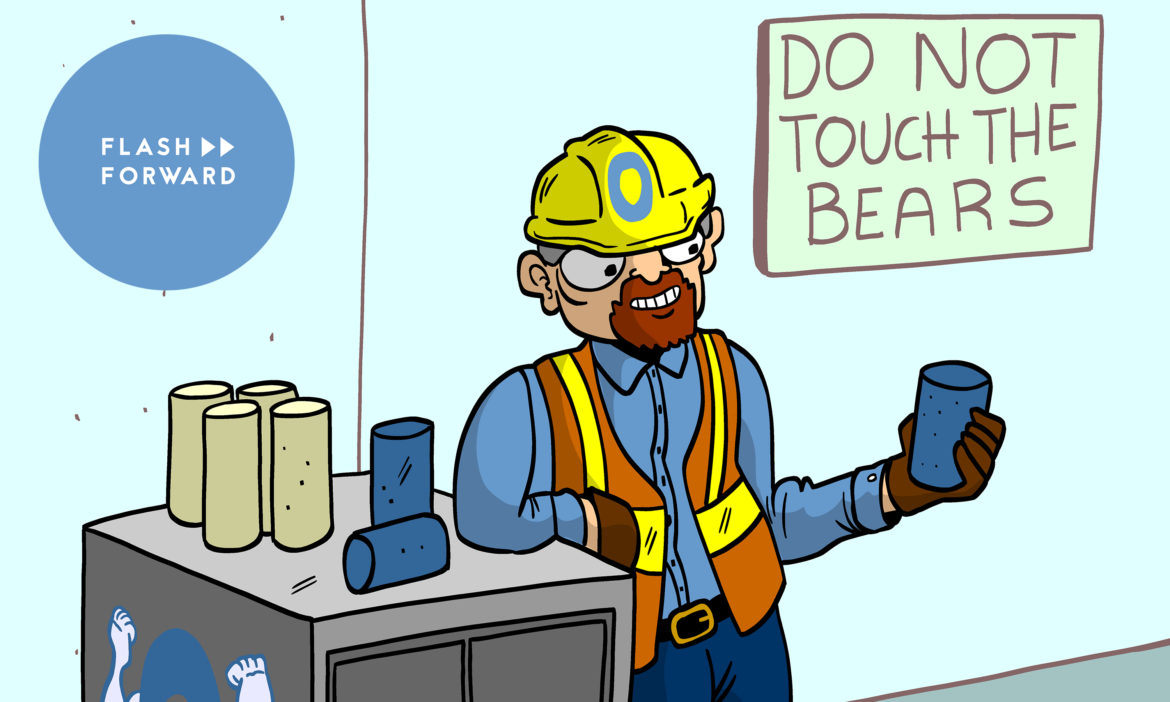

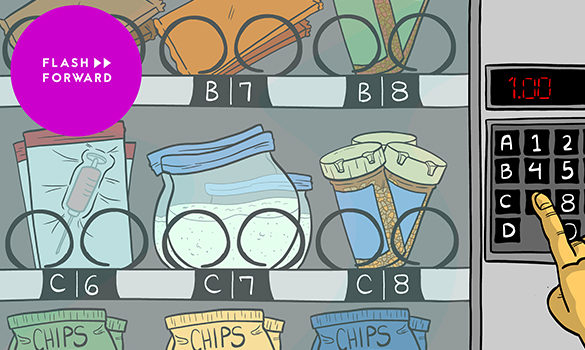

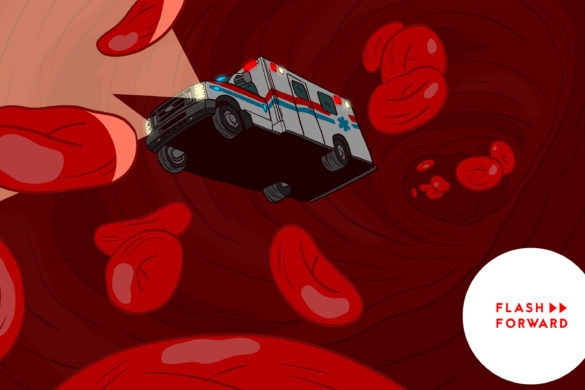
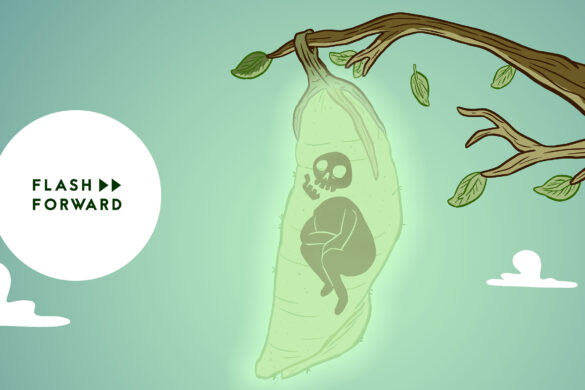

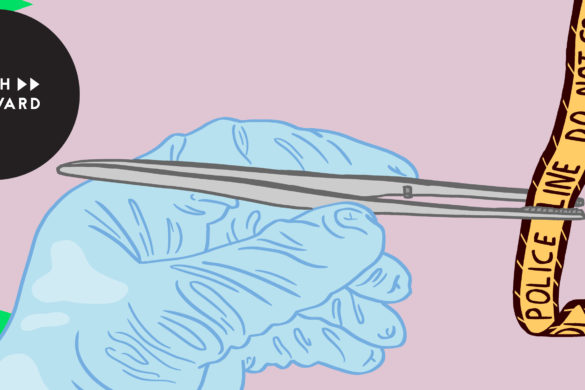


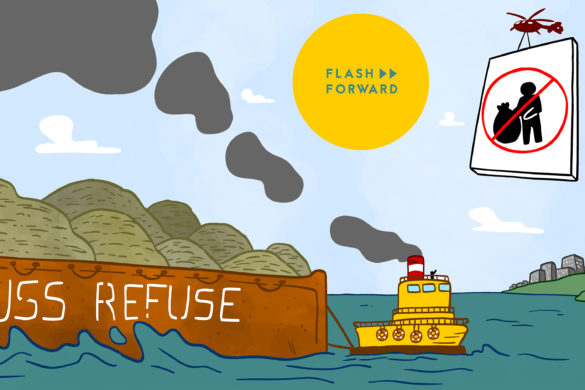
5 comments
“I see no future in physical spaces.”
Me too! That statement resonates with me so much.
[…] EARTH: The Cement Ban […]
[…] mentions a ‘better concrete’, which he heard about on EARTH: The Cement Ban episode of Flash Forward pod. A cool podcast about the future you should definitely check out. […]
[…] no more miniseries going forward. And I’m kind of peeved about it.Best episodes of the year: “EARTH: The Cement Ban”, “BODIES: Switcheroo”, “CRIME: Can You Sue An Algorithm?”, “POWER: […]
[…] ☀️ 🏗 This could be huge. So far there aren’t any real alternative ways of powering these industries. Secretive energy startup achieves solar breakthrough. “The breakthrough means that, for the first time, concentrated solar energy can be used to create the extreme heat required to make cement, steel, glass and other industrial processes. In other words, carbon-free sunlight can replace fossil fuels in a heavy carbon-emitting corner of the economy that has been untouched by the clean energy revolution.” On the same topic: Cement has a carbon problem. Here are some concrete solutions, and the previously featured Flash Forward episode, The Cement Ban. […]